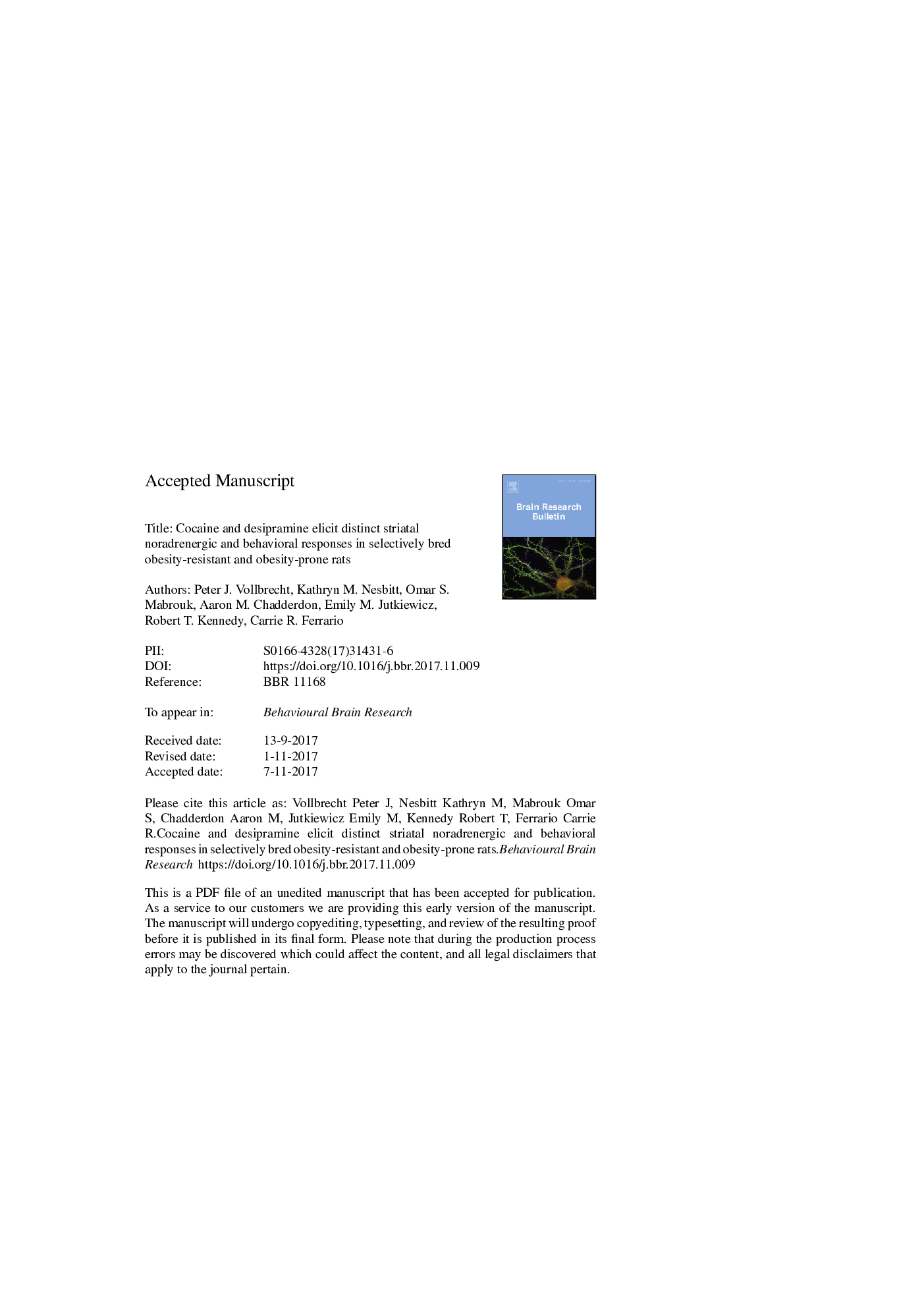| Article ID | Journal | Published Year | Pages | File Type |
|---|---|---|---|---|
| 8837841 | Behavioural Brain Research | 2018 | 20 Pages |
Abstract
Previous studies have demonstrated a role for norepinephrine (NE) in energy regulation and feeding, and basal differences have been observed in hypothalamic NE systems in obesity-prone vs. obesity-resistant rats. Differences in the function of brain reward circuits, including in the nucleus accumbens (NAc), have been shown in obesity-prone vs. obesity-resistant populations, leading many researchers to explore the role of striatal dopamine in obesity. However, alterations in NE transmission also affect NAc mediated behaviors. Therefore, here we examined differences in striatal NE and the response to norepinephrine transporter blockers in obesity-prone and obesity-resistant rats. We found that striatal NE levels increase following systemic cocaine administration in obesity-prone, but not obesity-resistant rats. This could result from either blockade of striatal norepinephrine transporters (NET) by cocaine leading to reduced NE reuptake, or circuit-based responses following cocaine administration resulting in increased NE release. Retrodialysis of the NET inhibitor, desipramine, into the ventral striatum did not cause selective increases in striatal NE levels in obesity-prone rats, suggesting that circuit-based mechanisms underlie NE increases following systemic cocaine administration. Consistent with this, systemic desipramine treatment decreased locomotor activity in obesity-prone, but not obesity-resistant rats. Furthermore, obesity-prone rats were also more sensitive to desipramine-induced reductions in food intake compared to obesity-resistant rats. Taken together, these data expand our understanding of differences in NE systems of obesity-prone vs. resistant rats, and provide new insights into basal differences in striatal systems that may influence feeding behavior.
Keywords
Related Topics
Life Sciences
Neuroscience
Behavioral Neuroscience
Authors
Peter J. Vollbrecht, Kathryn M. Nesbitt, Omar S. Mabrouk, Aaron M. Chadderdon, Emily M. Jutkiewicz, Robert T. Kennedy, Carrie R. Ferrario,
